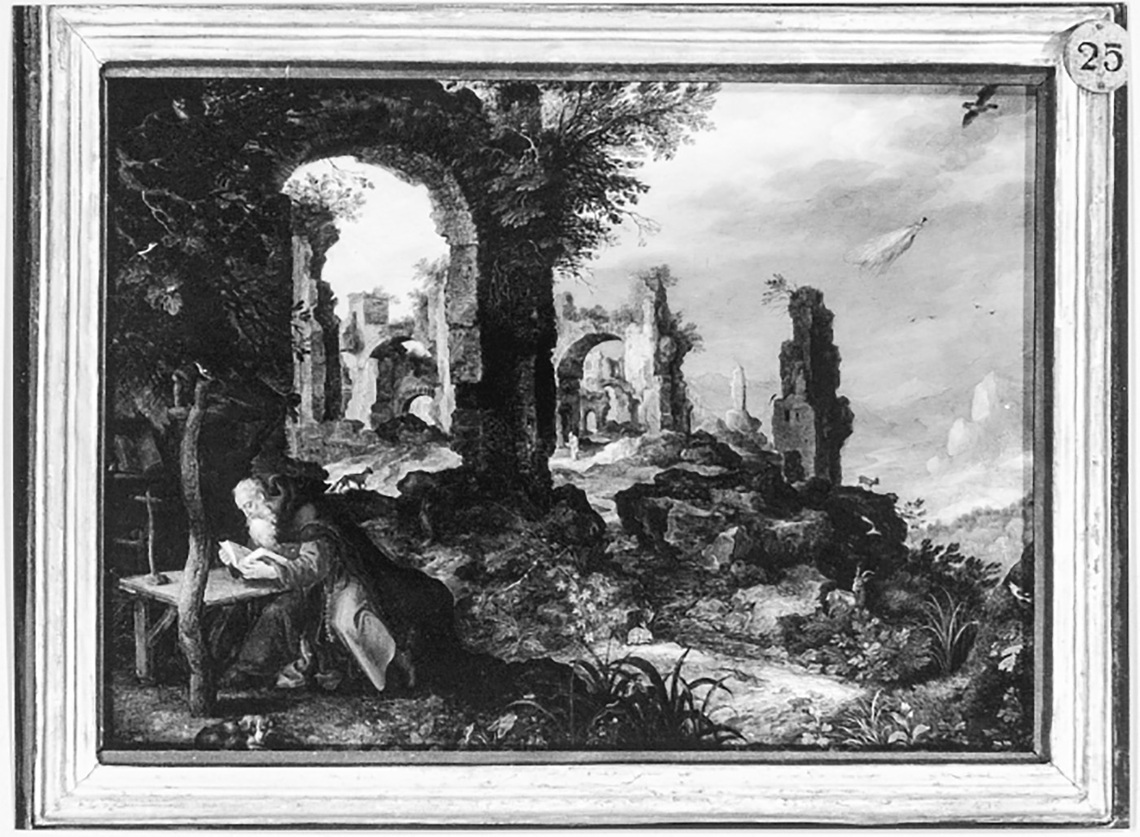Mountain Landscape with a Hermit Reading in front of Ruins (St. Anthony)
| Object type | Painting |
| Genre | Religious |
| Date | 1596 |
| Dimensions | 25 x 35 cm |
| Support | Copper |
| Medium | Oil |
| Signature | BRUEGHEL 1596 |
| Collectors/patrons | Federico Borromeo |
| Our attribution | Jan Brueghel the Elder |
| Other authorities | Ertz 2008-10, #288 Ertz 1979, #30 |
| Location | Milan, Italy |
| Collection | Ambrosiana |
| Accession numbers | inv. #75/25 |
| Tags | Resting, Deer, Ruins, Borromeo, Hermits, Old Testament |
| External resources | Ambrosiana |


Two preparatory drawings in Rotterdam, Museum Boymans-van Beuningen, Inv. #4 & #2. Hermit is based on an engraving by Jan and Raphael Sadelar after a design by M. de Vos, the second plate in their series Solitudo sive Vitae Patrum Eremicolarium (c.1588); the scene shows The Temptation of St. Anthony Jan leaves out the tempting demons here. That subject seems not really to have interested Borromeo, who evidently once owned a Brueghel Temptation of St. Anthony and then deacquisitioned it. In the engraving the saint occupies a much larger proportion of the picture's surface; in the painting, the setting matters more.
Many different animals are figured here, including a footless bird of paradise.
Ruin in the background is taken from Jan's drawing of Baths of Caracalla; drawing of them dated 1595 is also in Rotterdam (Luijten cat. #49).
Jan's reliance on engravings is not that consistent and is actually incredibly normal for painters of his generation, in these little cabinet painters. The works in The Prado NOT by JB but from his circle are often based on engravings: Jan the Younger Abundance (Prado 1402) is based on Ph. Galle, Prosopographia, 1574 #3; De Clerck/Alsloot Paradise with Elements is based on engravings by Matham after Goltzius and De Bruyn after Marten de Vos (in Diaz Padron).